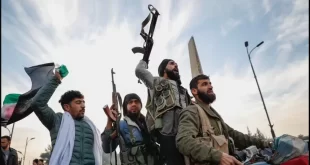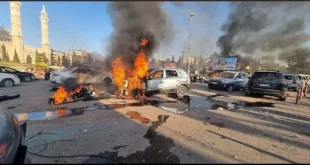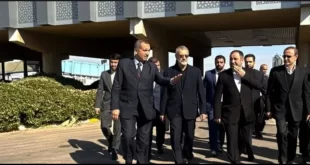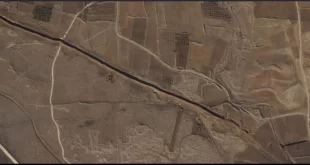Sep 3, 2013, Corbett Report
As the US inches closer to military intervention in Syria, many in the West are only now bothering to familiarize themselves with the Syrian conflict. Although sometimes referred to as a ‘civil war’ or an ‘armed uprising,’ the conflict has to be seen as part of a broader struggle between competing power blocs for regional dominance.
The struggle can largely be seen as one taking place between the US, Israel, and their regional allies on one side, and Iran and its allies on the other. Although fundamentally a geopolitical contest, the power blocs roughly map a Sunni/Shia divide in the Muslim world that can be played on to stir up religious frenzy in the population and motivate cadres of fighters willing to fight and die for the cause. In this context, the destabilization of Syria can be seen as a threat to one of Iran’s closest allies and the prospect of a Sunni majority government of the country threatens to drive a wedge in the so-called Shia land bridge that physically connects the Iranian power bloc.
Each member of these power blocs have their own motivations in the overall struggle for regional dominance. Turkey and Qatar are looking to increase their regional clout and secure their positions in the energy corridors that are vital to their economic futures. The Israelis are interested in keeping the Muslim world divided along sectarian lines in order to keep them from attacking Israel. The Saudis fear the uprising of their own Shiite population and the possibility of the overthrow of the House of Saud. But whatever the reason, each of the players has the incentive to fund, arm and train the jihadis who are now waging war on Assad’s government.
When seen in this light, one of the key characterizations of the media portrayal of the Syrian war is exposed for the lie that it is. Rather than ‘rebels’ who are part of some spontaneous internal uprising, the combatants in this insurrection are in fact, foreign-armed, foreign-supplied, and in many cases simply foreign Salafi jihadis, the very same groups that would be called “terrorists” if they were operating in a country friendly to Western interests. And of the states that are arming and supplying the jihadis, perhaps the most important at this stage of the conflict is Saudi Arabia, whose efforts are being coordinated by perhaps one of the most enigmatic figures operating on the grand chessboard today: Prince Bandar bin Sultan, better known as Bandar Bush.
It has long been acknowledged that the Saudis have been one of the key players funding, arming, training and smuggling terrorists into Syria during the conflict. A February 2012 report from the BBC alleged that Saudi Arabia was one of the key states bankrolling the Syrian jihadis. An October 2012 follow-up confirmed Saudi weapons were being used by the so-called rebels. In February of this year, the Saudi ambassador to Jordan, Fahad bin Abdul Mohsen al-Zaid, admitted that Saudis were involved in arming and training terrorist groups in Syria.
But the Saudi connection to the fighting in Syria took on a new dimension in the wake of last month’s chemical attack on Ghouta. The Saudis are now being blamed for supplying the chemical weapons that the rebels used in the attack. In one key report, veteran AP correspondent Dale Gavlak and on-the-ground reporter Yahyah Ababneh interviewed rebels in Ghouta who alleged that the weapons had been supplied by Prince Bandar bin Sultan, the Saudi intelligence chief. According to these reports, only the Saudis and the Al Qaeda-linked Jabhat al-Nusra terrorists knew what the weapons were, and other fighters were tricked into handling and storing them in preparation for the attack. In one incident, 12 rebels were killed inside of a tunnel used to store the weapons, some described as having a “tube-like structure” and others characterized as looking like a “huge gas bottle.”
Yesterday I talked to Sharmine Narwani, a geopolitical analyst and commentator at Al-Akhbar English, about Prince Bandar’s background, his disappearance from Saudi politics in 2008 and his sudden reappearance on the scene in Syria.
Perhaps the most remarkable part of all of this are the multiple sources now pointing to Bandar specifically as the one who supplied the jihadis in Syria with the chemical weapons that were used in the recent attack on Ghouta. This aspect of the story ties in with Bandar’s meeting with Russian President Putin in Moscow in July.
Late last week I discussed the details of this meeting with Asia Times Online roving correspondent Pepe Escobar.
These reports, emerging now from multiple sources, are explosive, and any serious investigation into the events in Syria last month would include a thorough examination of Prince Bandar’s role in them. Of course, there is no serious investigation taking place and the Obama administration has already announced that Assad’s guilt for the chemical weapons attacks has been determined even before the UN inspectors finished their investigation, let alone filed their report.
For those who receive their information from the American corporate media, what ultimately happens in Syria will play itself out like a Hollywood movie, full of drama and easy-to-digest plots for the attention-deprived audience, but bearing little resemblance to the multifaceted reality of the situation. Meanwhile, those who are interested in the Prince Bandar story and the behind-the-scenes machinations that threatens to draw Russia into military confrontation with Saudi Arabia and its allies will have to keep their eyes on foreign media and alternative sites like BoilingFrogsPost.com.
 Syria Support Movement solidarity with the Syrian people
Syria Support Movement solidarity with the Syrian people




